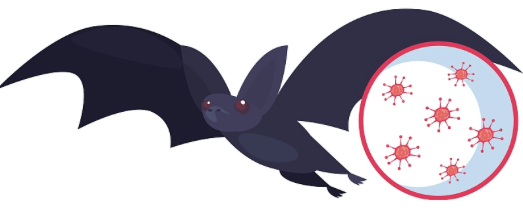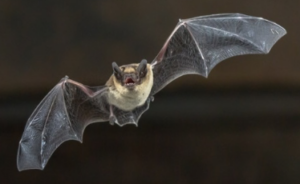SARS-CoV-2-like RBD allowing ACE2-mediated entry into human cells from bats of Indochinese peninsula

Last Updated on October 18, 2021 by Joseph Gut – thasso
October 18, 2021 – It is still unclear how exactly SARS-CoV-2 passed on to humans. How did the coronavirus pandemic, which is still affecting everyday life and coexistence around the world, even begin? Almost two years after the virus first appeared, researchers and science as a whole are still puzzled. Most assume that a person was infected from an animal somewhere. But the idea that a laboratory accident could have started the pandemic is also heavily discussed. However, a new study by the renowned Pasteur Institute in Paris suggests that the pathogen was transmitted naturally from animals to humans.

However, a new study by the renowned Pasteur Institute in Paris suggests that the pathogen could have been transmitted naturally from animals to humans in that researchers have discovered the pathogen’s closest relative to date, which in turn may support the thesis that the pandemic began as a result of natural infection.
Thus, a research team led by Marc Eloit has discovered three coronaviruses in bats in Southeast Asian Laos that are more similar to SARS-CoV-2 than any virus found before. Bats have long been considered the most likely natural source of the pathogen. Previous studies on close relatives of SARS-CoV-2 had also shown that the region around Laos, Thailand, Cambodia and southern China is a hotspot for such viruses. However, SARS-CoV-2 precursors, which are genetically closely related and could penetrate human cells via a similar enzyme had not been identified previously. Moreover, the true animal reservoir of SARS-CoV-2 is unknown despite reports of various SARS-CoV-2-related viruses in Asian Rhinolophus bats, including the closest virus from R. affinis, RaTG13.
Several studies have suggested the involvement of pangolin coronaviruses in SARS-CoV-2 emergence. SARS-CoV-2 presents a mosaic genome, to which different progenitors contribute. The spike sequence determines the binding affinity and accessibility of its receptor-binding domain (RBD) to the cellular angiotensin-converting enzyme 2 (ACE2)  receptor and is responsible for host range. SARS-CoV-2 progenitor bat viruses genetically close to SARS-CoV-2 and able to enter human cells through a human ACE2 pathway have not yet been identified, though they would be key in understanding the origin of the epidemics. The present study demonstrates that such viruses indeed circulate in cave bats living in the limestone karstic terrain in Northern Laos within the Indochinese peninsula. The researchers found that the RBDs of these viruses differ from that of SARS-CoV-2 by only one or two residues, bind as efficiently to the hACE2 protein as the SARS-CoV-2 Wuhan strain isolated in early human cases, and mediate hACE2-dependent entry into human cells, which is inhibited by antibodies neutralizing SARS-CoV-2. These findings therefore indicate that bat-borne SARS-CoV-2-like viruses potentially infectious for humans circulate in Rhinolophus spp. in the Indochinese peninsula.
receptor and is responsible for host range. SARS-CoV-2 progenitor bat viruses genetically close to SARS-CoV-2 and able to enter human cells through a human ACE2 pathway have not yet been identified, though they would be key in understanding the origin of the epidemics. The present study demonstrates that such viruses indeed circulate in cave bats living in the limestone karstic terrain in Northern Laos within the Indochinese peninsula. The researchers found that the RBDs of these viruses differ from that of SARS-CoV-2 by only one or two residues, bind as efficiently to the hACE2 protein as the SARS-CoV-2 Wuhan strain isolated in early human cases, and mediate hACE2-dependent entry into human cells, which is inhibited by antibodies neutralizing SARS-CoV-2. These findings therefore indicate that bat-borne SARS-CoV-2-like viruses potentially infectious for humans circulate in Rhinolophus spp. in the Indochinese peninsula.
However, none of these bat viruses harbors a furin cleavage site in the spike protein. This property makes it easier for the virus to enter human cells. SARS-CoV-2 has this characteristic as the only known Sarbecovirus. That in turn could be an indication of its origin in a laboratory.
In their present study, however, the researchers come to the conclusion that, despite the lack of the furin cleavage site, the new viruses could have contributed to the development of SARS-CoV-2 and pose a risk for direct transmission to humans in the future. Thus, people who work in caves or certain religious communities who are in the vicinity of these limestone caves, as well as tourists who visit the caves, are particularly at risk of being exposed to the virus. Further studies should now show i) whether these exposed population groups have become infected with one of these viruses, ii) whether they are accompanied by symptoms, and iii) whether they could offer protection against later SARS-CoV-2 infections.
See here a short sequence on RaTG13:

